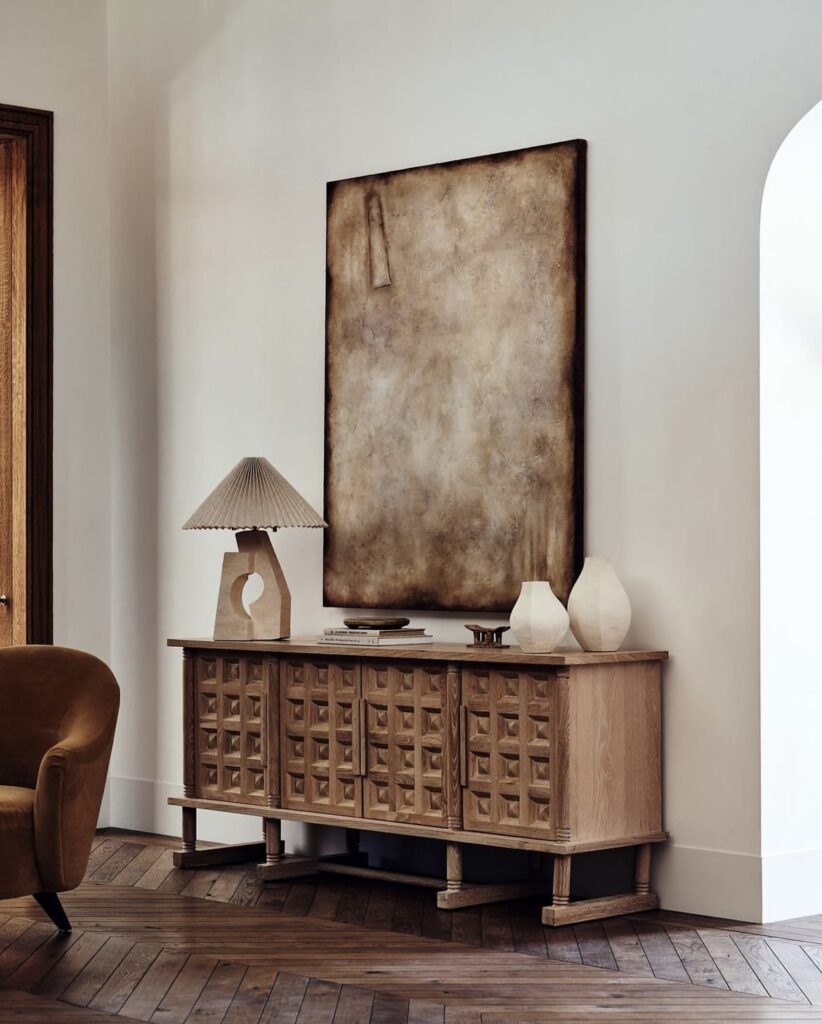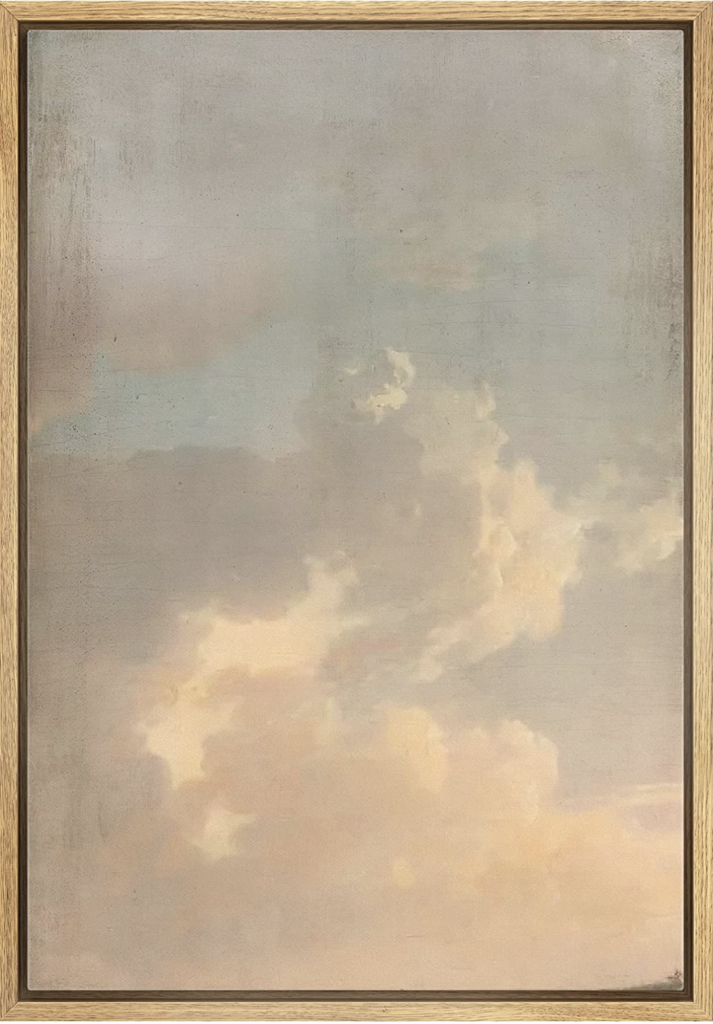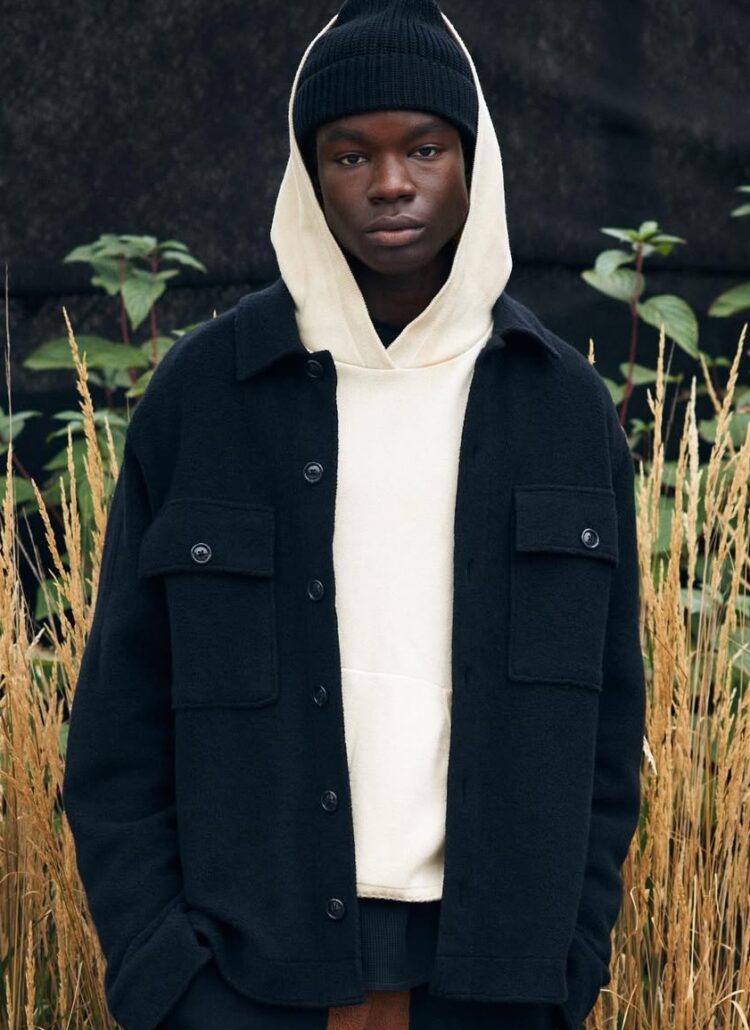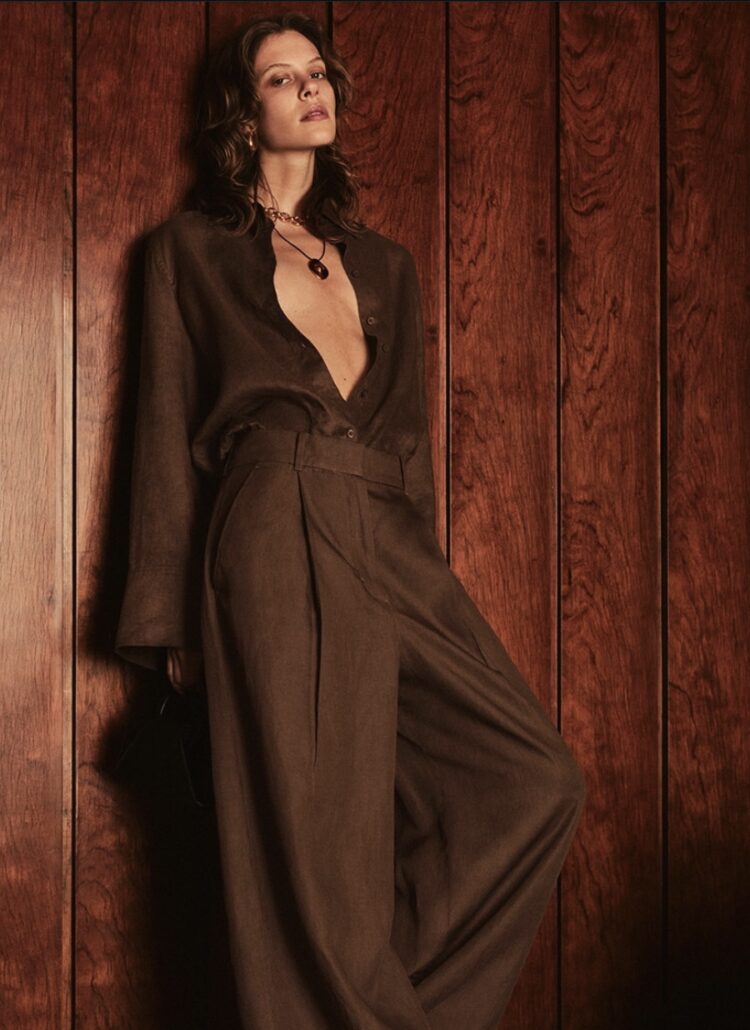Aesthetics, whether you’ve been aware of them or not, aesthetics have been present every day since you first began to experience the world around you. From the first time you looked at anything and thought, “wow, that’s beautiful,” that personal awareness of your aesthetic sense was born.
What is an aesthetic?
Simply put, an aesthetic relates to the enjoyment or study of beauty. Beyond that, it is a set of principles or criteria for what is considered beautiful or attractive, typically in the arts and design. It encompasses our personal taste and the overall visual and emotional impact of a work of art or design that we observe or appreciate. Aesthetics can vary widely and can include cultural, historical, and individual perspectives. It can refer to the appearance of a single object, or it can encompass a wide range of things like fashion, architecture, visual arts, and more.
From appreciating the overall design of a book cover, to admiring little things, like the simplistic clean lines of an empty journal or a beautiful color palette, those small recognitions all encompass your personal experience of aesthetic vision. And when we put our personal aesthetic sense into a regular and successful aesthetic practice, we’ll find that the quality of our lives is improved beyond measure.
To better understand the scope of aesthetics, we’re going way back to when the concept itself was discovered.
Where did aesthetics come from?
Aesthetics, as a concept, originated in ancient Greece. The word “aesthetics” comes from the Greek word “aisthēsis,” which means “perception.” The concept of aesthetics as a branch of philosophy concerned with beauty and taste was developed by 18th-century German philosopher, Alexander Baumgarten, who originally coined the term “aesthetics.”
In Baumgarten’s view, aesthetics was a separate field of study from ethics and epistemology, and he believed that beauty and taste were important aspects of human experience that could be studied and understood in their own right. Since then, the field of aesthetics has evolved and expanded, encompassing a wide range of ideas and theories about beauty, art, and the nature of aesthetic experience.
Where is the concept of ‘aesthetics’ being used?
Today, the study of aesthetics is a multidisciplinary field that draws on philosophy, psychology, sociology, and other fields to explore questions about the nature of beauty, taste, and the sensory experiences of art and design. In today’s society, there are different types of aesthetics that are being used in these 6 areas:
1. Interior Design & Architecture
Aesthetics play a significant role in the design of interiors, buildings, and urban spaces, and the use of color, form, and texture to create visually appealing and functional environments is an important part of the design process.
2. Marketing & Advertising
Aesthetics are frequently used to convey a brand’s image and values, and to appeal to a specific target audience.
Advertisers use color, typography, and imagery to create a specific look and feel that is associated with a brand or product.

3. Art & Literature
In art and literature, aesthetics continue to play a major role in the creation and interpretation of these areas, with artists and writers exploring the relationship between beauty, form, and content in their work.
4. Fashion & Beauty
To the fashion and beauty industries, aesthetics serve as the heart to designers and manufacturers creating products that are aesthetically pleasing and appeal to a wide range of consumers made of different kinds of people.
And to really standout from other brands, in-person stores are going above and beyond with aesthetics to create a memorable experience for their guests, all while aligning to their brand stories and values.
5. Technology & Product Design
Aesthetics play an important role in the design of technology products, and digital media, with designers creating products that are not only functional but also aesthetically pleasing and appealing to users.
6. Aesthetics in Business
Aesthetic business refers to a business that focuses on the design, creation, and marketing of products or services that prioritize aesthetic appeal. This type of business often operates in industries such as fashion, beauty, home decor, and art, and may include clothing boutiques, beauty salons, furniture stores, art galleries, and more. The goal of an aesthetic business is to create products and experiences that are not only functional, but also visually appealing and aesthetically pleasing.
To successfully practice aesthetic businesses, here are the key principles that work together to attract customers and create a strong brand identity.
The 7 Components that Make Up a Successful Aesthetic Business
1. Brand Identity
A strong and consistent aesthetic can help establish a brand’s identity and differentiate it from competitors.
2. Customer Experience
Aesthetics can significantly impact the customer experience by creating a visually appealing and memorable environment that appeals to their senses.
3. Marketing & Advertising
Aesthetics are a key component of marketing and advertising, influencing how consumers perceive and respond to products and services.
4. Product Design
The design and aesthetic appeal of a product can greatly impact its perceived value and marketability.
5. Employee Morale
A visually appealing and aesthetically pleasing workplace can have a positive impact on employee morale, creativity, and productivity.
6. Online Presence
A strong and visually appealing online presence can help businesses stand out and attract customers in the digital age.
7. Commercial Real Estate
Aesthetics play a major role in the design and development of commercial real estate, influencing the appeal and value of retail and office spaces.
To summarize, aesthetics will always play a crucial role in business today by influencing brand identity, customer experience, marketing, product design, employee morale, online presence, and commercial real estate.
Additionally, with the rise of AI, aka, Artificial Intelligence, the concept of aesthetics has carved out its own subfield within the world of AI.
What is AI Aesthetics?
Aesthetic Intelligence Aesthetics refers to the interdisciplinary field of study that combines Artificial Intelligence (AI) with the appreciation and creation of beauty in the arts. It involves using AI techniques such as machine learning, computer vision, and generative models to produce or analyze aesthetic content such as music, visual art, poetry, and more. The goal of AI aesthetics is to understand and replicate the principles that make generative art aesthetically pleasing, as well as to generate new forms of art through computational methods.
So how is this new way of machine learning showing up today?
AI aesthetics is being used today in a variety of ways to produce and analyze aesthetic content. For example, AI algorithms are being used to generate music, visual art, and poetry, as well as to analyze existing works and identify patterns and trends in artistic styles. In the future, this type of computational aesthetics, a hybrid between science and art, is likely to play an even larger role in the arts, as technological advances continue to make it possible to generate more sophisticated and human-like outputs.
Additionally, AI aesthetics has the potential to revolutionize the way we think about and experience art, by allowing us to create new forms of art that were previously not possible. As the field continues to evolve, it is likely that we will see AI aesthetics being used in new and innovative ways to push the boundaries of what is possible in the arts.
Now that we’re aware of how it plays a role in society, let’s chat about the value of aesthetics, and how it benefits our personal lives.
The 5 Benefits of Finding Your Personal Aesthetic
1. Increased Confidence
Knowing your personal aesthetic and dressing in a way that reflects it can increase your confidence and help you feel more comfortable and authentic in your own skin.
2. Better Self-Expression
Your personal aesthetic is a reflection of your personality, style, and taste. By finding your aesthetic, you can better express yourself and showcase your individuality to the world.
3. More Efficient Shopping
Knowing your aesthetic makes shopping easier and more efficient. You can focus on buying items that fit your style and complement your wardrobe, rather than buying items that don’t suit you.
4. Time-Saving
By having a clear sense of your aesthetic, you can quickly put together outfits that you know look good on you and save time getting dressed.
5. Improved Style
Finding your personal aesthetic can help you improve your overall style and create a more cohesive and polished look.
In short, finding your personal aesthetic can bring a number of benefits, including increased confidence, better self-expression, more efficient shopping, time-saving, and improved overall style. By discovering your personal aesthetic, you can create a wardrobe, and a life, that reflects your unique personality and enhances your sense of style.
How to Find Your Aesthetic
Now that you’re aware of the benefits of this practice, how do you cultivate your personal aesthetic?
To find your personal aesthetic, you’ll need to utilize all five of your senses: sight, hearing, touch, taste, and smell. As human beings, using our senses to spark our aesthetic experience is the best way to start practicing.
Sight
Admire any visual similarities, cues, and elements such as color, line, shape, texture, and pattern that are evoking emotions and contributing to the overall aesthetic appeal of your object or environment. Really, any beautiful things you recognize instantly are worth noting to heighten your aesthetic awareness.
Hearing
Listen to the sound of music, nature or other audio elements surrounding you that are influencing your mood and overall aesthetic experience.
Touch
Reach out and feel the texture of your object and notice how that its finish is impacting your sense of touch, and how it’s contributing to your entire experience.
Taste
When eating, drinking, or even breathing in the air of a specific area, that lingering flavor and taste can contribute to your experience’s aesthetic appeal.
Smell
The scent of an environment or an object can inspire your emotions and contribute to the overall aesthetic experience.
By engaging multiple senses, our perception and experience of aesthetics can become more holistic and immersive. Now that our 5 senses are activated and ready, here are the 5 steps needed in any aesthetic practice.
How to Find Your Personal Aesthetic in
5 Easy Steps
1. Reflect & Take Note of Your Personal Style
Think about what you enjoy wearing, your favorite colors, and the things you surround yourself with. This will give you an idea of what you like and what reflects your personal style.
2. Gather Inspiration
Browse fashion magazines, websites, and social media to gather inspiration. Pay attention to the styles, colors, and textures that catch your eye and make you feel good.
3. Experiment
Don’t be afraid to experiment with different styles and colors. Try different combinations in your own wardrobe, even if it’s just through small changes like accessories or makeup. This will help you refine your style and see what works best for you.
4. Create a Mood Board
Collect images, colors, and textures that resonate with you and create a Pinterest mood board or vision board, like with a cork board, to organize your inspiration. This will help you see patterns and identify your preferred style.
5. Trust Your Instincts
Ultimately, the most important thing is to trust your instincts and choose what makes you feel good. Your personal aesthetic should reflect your personality, style, and taste, so trust your gut and don’t be afraid to embrace your individuality.
To sum it up, finding your personal aesthetic style is a process of reflection, inspiration gathering, experimentation, and trusting your instincts. By following these steps, you can learn to discover, cultivate, and evolve your own aesthetic that is uniquely yours and reflective of your personal taste and preferences. If you’re needing a bit more guidance, you can do a quick google search of ‘aesthetic quizzes’ to take, which can also help you find a general aesthetic to get you started.
And to sharpen our aesthetic senses, staying inspired will also help in exploring your aesthetic awareness. With each new inspiring experience, you’ll improve your aesthetic awareness and eventually, become a master in harnessing its capabilities. So where can you find aesthetic inspiration?
Improve Your Aesthetic Senses with These 8 Sources of Inspiration
1. Nature
The beauty of natural landscapes, like a beautiful garden, animals, and other organic forms can be a source of inspiration.
2. Art
Museums, galleries, and exhibitions showcasing art in various forms can be a great source of inspiration. Visiting those attractions will help to exercise your artistic vision by examining the beautiful objects on display will likely lead to more aesthetic ideas.
3. Architecture
The design and style of buildings, spaces, and urban environments can be inspiring. When experiencing a home interior, take note of the beautiful decorative items that have been thoughtfully placed to contribute to your aesthetic experience.
4. Fashion
The latest trends and styles in fashion can be a source of inspiration for aesthetics.
5. Music
Different genres of music can evoke different emotions and aesthetics, providing inspiration.
6. Film
Cinematography, set design, and costume design can be a source of inspiration for aesthetics. As a practice, you can list all of your favorite films and take a closer look at your personal response to why exactly you enjoy that particular film.
7. Online
Social media accounts, design blogs, an Instagram feed, their Instagram posts that most resontate with you, and websites featuring curated collections of inspiring visuals can be a useful source of inspiration.
8. Personal Experiences
Your own personal experiences, memories, and emotions can also be a source of inspiration for aesthetics. You can prepare for those experiences by creating a vision board, which is a great way to explore which experiences you’d like to prioritize.
And as we continue to explore our own aesthetics and those of the world, we’ll find that those aesthetics will always be evolving. So to be a part to that experience, how can we actively participate in evolving our aesthetic?
7 Ways to Help Evolve Your Aesthetic
1. Study & experiment with different styles
The first step, would be to explore various art forms, design styles, and cultural influences to broaden your understanding and expand your horizons.
2. Refine your skills
Practice your craft regularly to develop and refine your skills.
3. Seek out diverse perspectives
Engage with people from different backgrounds and cultures to gain fresh perspectives and broaden your understanding of aesthetics.
4. Evaluate your work
Regularly reflect on your work and identify areas for improvement. Seek feedback from others to gain new insights into your aesthetic.
5. Keep learning
Stay up-to-date with the latest trends and developments in your field by attending workshops, conferences, and reading books and articles.
6. Stay curious
Stay curious and open-minded, and be willing to try new things and take risks in order to evolve and grow your aesthetic.
7. Collaborate with others
Collaborating with others can provide new opportunities to learn, grow, and evolve your aesthetic.
Remember, evolving your aesthetic takes time and patience. Keep experimenting, learning, and growing, and you will see your aesthetic evolve over time.
From a very early age, the concept of aesthetics has created a great impact on our lives. It will continue to shape our emotions, expression of culture, creativity, environment, societies consumer behavior, and will maintain its universal appeal for years to come. And now that we’ve covered that anyone has the ability to tap into that aesthetic sense, the human experience, for everyone, will forever be elevated to the fullest, so that we may adopt a better understanding of how to appreciate just how much beauty our world holds.
All opinions are my own. Images featured are not my own.







